
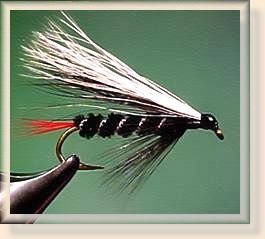 Skunk By Ed Gallop
|
|
|
|
|
Tying Steps: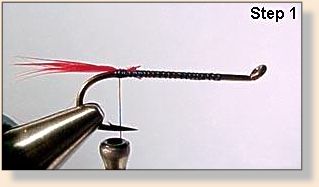
1. Tie in the red hackle fibers but don't make them too long. I visualize the
length to be the rear portion of the hook to the barb, or less.
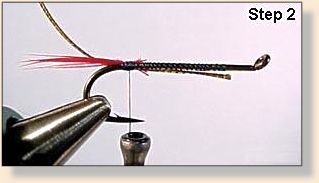 2. Tie in the gold oval tinsel leaving the tag end along the hook shank as long as the body will be. This will make for a more smooth shaped body (no hump at the butt).
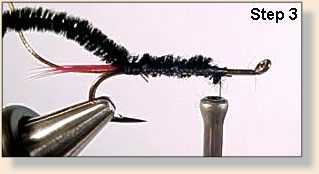 3. Tie in the black chenille as pictured, leaving the tag end the length of the tinsel tag. Secure the Chenille and tinsel with thread as you wrap toward the eye.
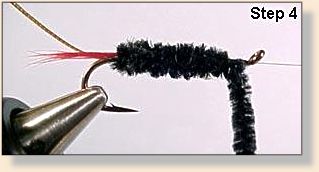 4. Wrap the chenille for the body and secure with a couple wraps of thread. Be sure to leave plenty of room to tie in the hackle and wing and allow for a finished head.
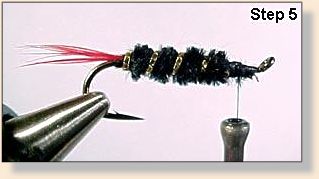 5. Wrap the tinsel to form a rib along the body and secure well with thread, along with the chenille.
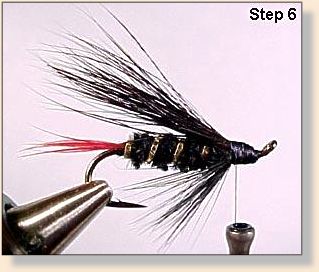 6. Tie in some black hackle fibers under the hook shank in a beard style. The hackle should reach the hook tip but no further than the barb. Then tie the black skunk (or deer, calf, etc.) hair on top of the shaft for the wing. Secure well and build up thread as shown.
 7. Tie in a small portion of white skunk hair (or deer, calf, etc.) over the black wing. I used polar bear in this photo. I sometimes use more white but most patterns call for a small amount. It is the small white stripe over the wing that gives this fly it's name, not the use of skunk hair.
Fishing the Skunk:Check out Ed's website, Fly Tying World for flies from all over the world! For more great flies, check out: Beginning Fly Tying and Intermediate Fly Tying.
|